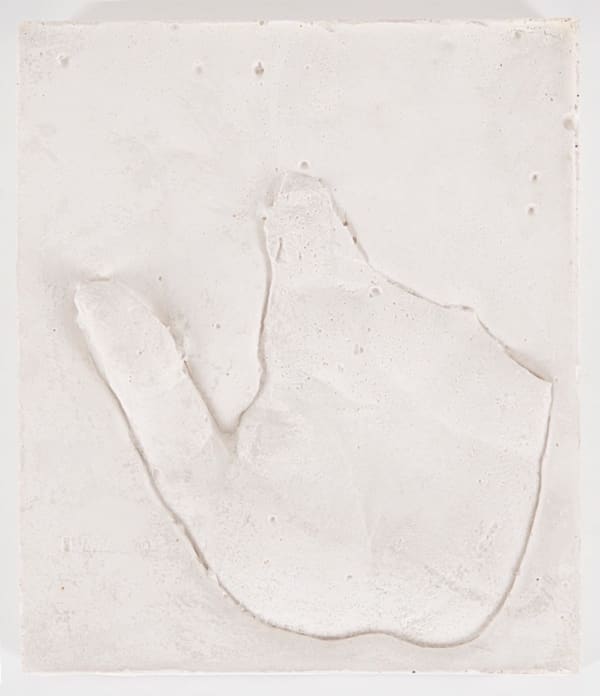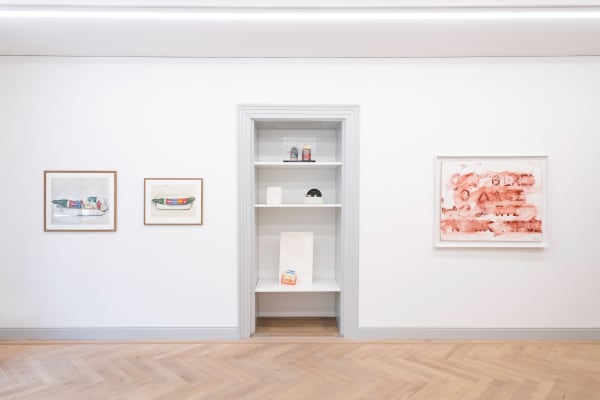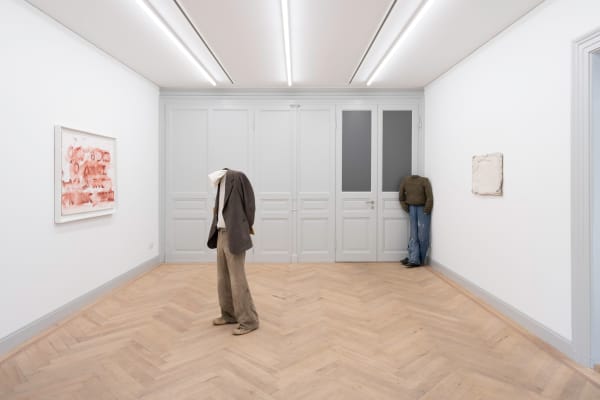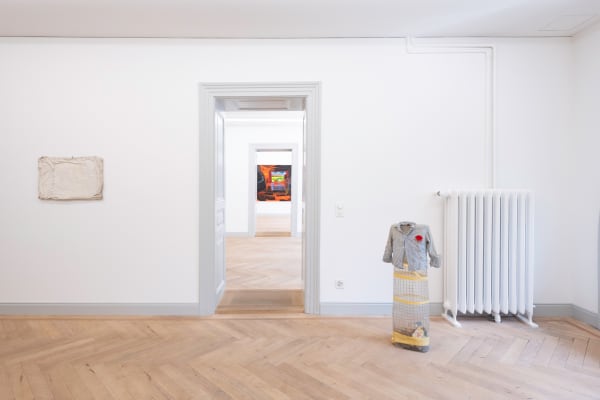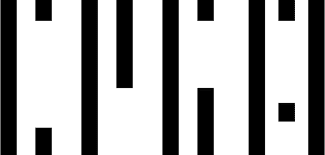Vlassis Caniaris: Selection of worksGalerie Peter Kilchmann, Rämistrasse, Zurich
On occasion of this year's Zurich Art Weekend, Galerie Peter Kilchmann is pleased to announce a project with works by Vlassis Caniaris (b. 1928 in Athens, d. 2011 in Athens) in the project space at Rämistrasse. The presentation brings together works on canvas, on paper, sculptures, assemblages and installations from 1960 to 2003.
June 10 - July 29, 2022
-
 Vlassis CaniarisUntitled, 2003Installation, painting (mixed media on canvas, framed) and figure (wire mesh, clothes, shoes, newspaper)Allover dimension: ca 185 x 180 x 160 cm
Vlassis CaniarisUntitled, 2003Installation, painting (mixed media on canvas, framed) and figure (wire mesh, clothes, shoes, newspaper)Allover dimension: ca 185 x 180 x 160 cm
Painting: 80 x 100 cm; 92.5 x 111.5 x 5.5 cm, framed
Figure: 148 x 48 x 35 cm -
 Vlassis CaniarisSliced cucumber, 1974Gouache on paper40 x 60 cm (15.7 x 23.6 in.)
Vlassis CaniarisSliced cucumber, 1974Gouache on paper40 x 60 cm (15.7 x 23.6 in.)
61.5 x 72 cm (24.2 x 28.3 in.), framedUnique -
 Vlassis CaniarisFossil, 1970Plaster19 x 16 x 4 cm (7.5 x 6.3 x 1.6 in.)Unique
Vlassis CaniarisFossil, 1970Plaster19 x 16 x 4 cm (7.5 x 6.3 x 1.6 in.)Unique -
 Vlassis CaniarisSurface - Space, 1960Plaster-soaked cloth and metal mesh44 x 65 x 3 cm (17.3 x 25.6 x 1.2 in.)Unique
Vlassis CaniarisSurface - Space, 1960Plaster-soaked cloth and metal mesh44 x 65 x 3 cm (17.3 x 25.6 x 1.2 in.)Unique -
 Vlassis CaniarisUntitled, 1970Plaster and plastic (children's toy)57.5 x 37 x 7 cm (22.6 x 14.6 x 2.8 in.)
Vlassis CaniarisUntitled, 1970Plaster and plastic (children's toy)57.5 x 37 x 7 cm (22.6 x 14.6 x 2.8 in.)
65.5 x 44 x 20 cm (25.8 x 17.3 x 7.9 in.), framed
(within plexiglass)Unique -
 Vlassis CaniarisUntitled, 1970Plaster, metal (cooking plate), plastic17 x 20 x 12 cm (6.7 x 7.9 x 4.7 in.)Unique
Vlassis CaniarisUntitled, 1970Plaster, metal (cooking plate), plastic17 x 20 x 12 cm (6.7 x 7.9 x 4.7 in.)Unique -
 Vlassis CaniarisGarbage Child, 1974Wire mesh, plastic, tape, shirt, fabric carnation, cigarette boxes, kodak film box, paper cup, paper103 x 47 x 16 cm (40.6 x 18.5 x 6.3 in.)Unique
Vlassis CaniarisGarbage Child, 1974Wire mesh, plastic, tape, shirt, fabric carnation, cigarette boxes, kodak film box, paper cup, paper103 x 47 x 16 cm (40.6 x 18.5 x 6.3 in.)Unique -
 Vlassis CaniarisObserver, 1980Wire mesh, clothes, shoes, plastic145 x 51 x 39 cm (57.1 x 20.1 x 15.4 in.)Unique
Vlassis CaniarisObserver, 1980Wire mesh, clothes, shoes, plastic145 x 51 x 39 cm (57.1 x 20.1 x 15.4 in.)Unique



